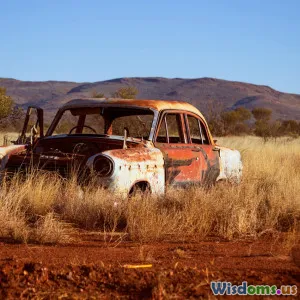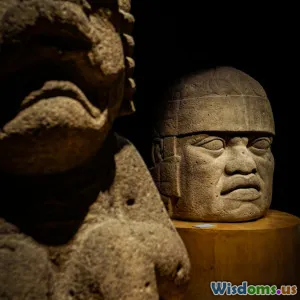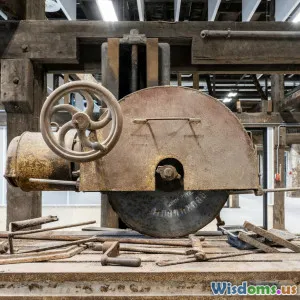
Join a Real Life Excavation: What to Expect and How to Prepare
8 min read Discover how to join a real excavation, what challenges to expect, and essential preparation tips for exploring ancient archaeological sites. (0 Reviews)
Join a Real Life Excavation: What to Expect and How to Prepare
Archaeology captivates the imagination like few other sciences—it combines adventure, history, and the thrill of discovery. For enthusiasts of ancient civilizations and archaeological mysteries, participating in a real-life excavation is a dream come true. But beyond the romance lies a rigorous, demanding, and rewarding experience. If you've ever wondered what it's like to join an archaeological dig and how best to prepare, this comprehensive guide is crafted to fuel your curiosity and get you ready to unearth the past.
Why Join an Excavation?
Exploring an excavation site offers a unique chance to connect directly with history. Unlike museum visits or reading about ancient cultures, digging into an actual site offers tactile interactions with artifacts and stratigraphy—layers of soil representing different time periods. Famous excavations, like those in Egypt's Valley of the Kings or the ancient city of Pompeii, rely on the hands of trained archaeologists and volunteers alike.
Participating directly allows you to contribute to expanding human knowledge, however small the piece uncovered may be. It’s not just about digging dirt; it’s about piecing together stories of the past, understanding human evolution, culture, and technology.
What to Expect at a Real-Life Excavation
1. Physical Demands
Excavations are physically challenging. Expect long hours outdoors, often under intense sun or unpredictable weather conditions. Digging involves manual labor: using trowels, brushes, and sometimes heavier tools to carefully extract artifacts without damaging them. Wearing protective clothing, gloves, and sturdy footwear is standard practice.
2. Team Dynamics and Expert Guidance
You won't be alone. Excavations usually involve a multidisciplinary team: archaeologists, students, conservators, and volunteers. The social and collaborative nature of the experience means learning from experts is invaluable. Renowned archaeologist Dr. Sarah Parcak highlights, “Fieldwork is a blend of science and teamwork, requiring patience, communication, and attention to detail.”
3. Learning Through Hands-On Training
Even if you lack prior experience, many programs offer initial training on methods like stratigraphic excavation, cataloging finds, and site mapping. Techniques such as using the Harris matrix to understand layering can initially seem complex but become intuitive with practice.
4. Expect Unpredictability
Not every day will involve spectacular discoveries. Fieldwork includes slow, meticulous digging, sifting through soil, and sometimes finding only common debris. Patience is key. The reward is cumulative—a single pottery shard can lead to significant contextual insights.
5. Impact of Weather and Environment
Sites might be in remote or rugged locations. For example, digs in the arid deserts of Peru require hydration strategies, while sites nestled in dense forests may have insect challenges. Adapting to environmental conditions is part of the adventure.
How to Prepare for an Archaeological Dig
1. Research and Choose the Right Program
Various excavation programs cater to different interests and experience levels. Universities, non-profit archaeological organizations, and private expeditions often invite volunteers. Websites like Archaeological Institute of America and Look4Earth provide listings of digs worldwide.
Check for programs accredited with clear safety measures, knowledgeable staff, and clear expectations. Consider the geographic location, duration, and costs involved.
2. Physical Fitness and Health
Given the physical nature of excavations, building general stamina is essential. Simple activities like hiking, strength training, and practicing lifting can prepare you for the demanding environment.
Consult your doctor if you have health concerns, and bring any necessary medications. Proper vaccinations may be advisable, depending on the location.
3. Acquire Proper Gear
Invest in quality gear:
- Durable boots with ankle support
- Breathable, lightweight clothing protective against the sun
- Sunhat and UV protection sunglasses
- Durable gloves for delicate excavation
- Backpack with hydration system
Some sites may supply tools, but having your own trowel or brush can be advantageous.
4. Brush Up on Basic Archaeological Knowledge
Familiarize yourself with archaeological methods and terminology. Books like "Archaeology: Theories, Methods, and Practice" by Colin Renfrew or "In Search of the Past" by James Deetz offer foundational knowledge that will help you be an effective assistant.
5. Prepare Mentally for Field Conditions
Excavation life can be rustic with limited internet and comfortable amenities. Embrace a mindset open to new experiences, occasional frustrations, and teamwork.
6. Packing Essentials
Aside from gear, pack a comprehensive first aid kit, insect repellent, sunscreen, reusable water bottles, field notebooks, pencils, and a camera or smartphone for documentation.
Real-World Examples
Pompeii Excavations, Italy
Volunteering at Pompeii offers rare insight into Roman urban life frozen in time since AD 79. Volunteers assist in uncovering structures, mosaics, and artifacts daily, often under expert archaeologist supervision.
Çatalhöyük, Turkey
One of the best-preserved Neolithic settlements, the excavation here provides volunteers hands-on experience with prehistoric human society discoveries, including murals and early architecture.
Maya Sites in Belize and Guatemala
These jungle-covered sites challenge participants with difficult climate and terrain, yet volunteers help reveal hieroglyphs and city layouts vital to understanding Mesoamerican civilizations.
Conclusion: Embarking on an Archaeological Adventure
Joining a real-life excavation promises a blend of intellectual fulfillment and physical engagement with history. From ancient pottery shards to buried architectural remains, each artifact tells a story waiting to be told. Proper preparation—physical, mental, and logistical—will maximize the experience and impact.
If the past resonates with you, stepping into the role of an archaeological explorer not only satisfies curiosity but contributes to the collective understanding of humanity’s shared heritage. Whether it’s uncovering the mysteries lying beneath the earth in Greece’s olive groves, Egypt’s dusty deserts, or Peru’s towering Andes, an excavation is a journey through time, inviting you to become part of history’s ongoing tale.
Are you ready to dig deeper?
“Archaeology reveals what stories the past thought it had buried.” — Adapted proverb
References and Further Reading
- Renfrew, Colin & Bahn, Paul. Archaeology: Theories, Methods and Practice. Thames & Hudson, 2016.
- Deetz, James. In Small Things Forgotten: An Archaeology of Early American Life. Anchor Books, 1996.
- Archaeological Institute of America: https://www.archaeological.org/
- Ancient History Encyclopedia: https://www.worldhistory.org/
- Dr. Sarah Parcak Interview, National Geographic 2020
Rate the Post
User Reviews
Other posts in Historical Travel
Popular Posts















